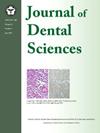Boosting the antibacterial potency of antimicrobial photodynamic therapy against oral pathogens through supplement agents: A narrative review
IF 3.1
3区 医学
Q1 DENTISTRY, ORAL SURGERY & MEDICINE
引用次数: 0
Abstract
Antimicrobial photodynamic therapy (aPDT) is a promising approach for managing oral infections; however, it faces several limitations, such as limited penetration depth, biofilm resistance, and photosensitizer dimerization or aggregation. To address these challenges, the current study reviews new techniques to enhance the antibacterial effectiveness of aPDT. Recent advances have pointed out the potential of novel supplement agents—including inorganic salts, antimicrobial peptides, surfactant media, and postbiotics—to overcome these limitations significantly. Inorganic salts like potassium iodide, potassium selenocyanate, and potassium thiocyanate can enhance aPDT by generating additional reactive species or increasing reactive oxygen species (ROS)-mediated cytotoxicity. Antimicrobial peptides disrupt membranes selectively and help penetrate deeper into biofilms, while surfactant media improve the solubility of photosensitizers and prevent their aggregation, thereby maximizing ROS production. Postbiotics not only lead to improved biofilm penetration but also cause increased oxidative stress on microbial cells. Therefore, these combined strategies have markedly improved microbial eradication, particularly against resilient biofilms and antibiotic-resistant strains. Although integrating these innovative supplement agents signals a new era for photodynamic therapy in oral healthcare—presenting renewed opportunities for practical, non-invasive, and resistance-free infection control—further studies are necessary to validate these findings, establish standardized protocols, and evaluate the long-term safety and clinical benefits of these combined strategies.
通过补充剂提高抗微生物光动力疗法对口腔病原体的抑菌效力:叙述综述
抗菌光动力疗法(aPDT)是一种很有前途的治疗口腔感染的方法;然而,它面临着一些限制,如有限的渗透深度,生物膜阻力,光敏剂二聚或聚集。为了应对这些挑战,本研究综述了提高aPDT抗菌效果的新技术。最近的进展指出了新型补充剂的潜力,包括无机盐、抗菌肽、表面活性剂介质和后生物制剂,可以显著克服这些限制。无机盐如碘化钾、硒氰酸钾和硫氰酸钾可以通过产生额外的活性物质或增加活性氧(ROS)介导的细胞毒性来增强aPDT。抗菌肽选择性地破坏膜并帮助深入渗透到生物膜中,而表面活性剂介质提高光敏剂的溶解度并防止其聚集,从而最大化ROS的产生。后生物制剂不仅可以提高生物膜的渗透性,还可以增加微生物细胞的氧化应激。因此,这些联合策略显著改善了微生物根除,特别是针对弹性生物膜和耐抗生素菌株。尽管整合这些创新的补充剂标志着口腔保健中光动力治疗的新时代-为实用,非侵入性和无耐药性感染控制提供了新的机会-还需要进一步的研究来验证这些发现,建立标准化的方案,并评估这些联合策略的长期安全性和临床益处。
本文章由计算机程序翻译,如有差异,请以英文原文为准。
求助全文
约1分钟内获得全文
求助全文
来源期刊

Journal of Dental Sciences
医学-牙科与口腔外科
CiteScore
5.10
自引率
14.30%
发文量
348
审稿时长
6 days
期刊介绍:
he Journal of Dental Sciences (JDS), published quarterly, is the official and open access publication of the Association for Dental Sciences of the Republic of China (ADS-ROC). The precedent journal of the JDS is the Chinese Dental Journal (CDJ) which had already been covered by MEDLINE in 1988. As the CDJ continued to prove its importance in the region, the ADS-ROC decided to move to the international community by publishing an English journal. Hence, the birth of the JDS in 2006. The JDS is indexed in the SCI Expanded since 2008. It is also indexed in Scopus, and EMCare, ScienceDirect, SIIC Data Bases.
The topics covered by the JDS include all fields of basic and clinical dentistry. Some manuscripts focusing on the study of certain endemic diseases such as dental caries and periodontal diseases in particular regions of any country as well as oral pre-cancers, oral cancers, and oral submucous fibrosis related to betel nut chewing habit are also considered for publication. Besides, the JDS also publishes articles about the efficacy of a new treatment modality on oral verrucous hyperplasia or early oral squamous cell carcinoma.
 求助内容:
求助内容: 应助结果提醒方式:
应助结果提醒方式:


